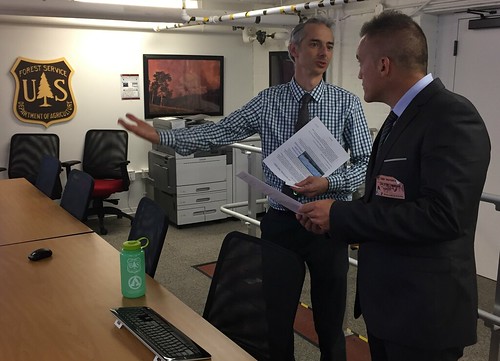
In 2001, Forest Service Incident Management Teams and crews responded to the terrorist attacks of September 11th with a well-coordinated response of multiple local, state, and federal emergency personnel. Our response to this national crisis highlighted the critical role of incident management systems when responding to an unforeseen national emergency.
The Forest Service has a long history of responding to emergencies. In 1970, southern California was under a siege of wildfires, most notably the Clampitt and Laguna Fires. These were the largest wildfires in California’s history at the time, in which 700 structures were destroyed and sixteen people lost their lives. Although national, state, county, and local responding agencies cooperated to the best of their ability, problems with communication and coordination often compromised their effectiveness. After this incident, Congress tasked the Forest Service with designing a system to effectively coordinate interagency actions. In partnership with other emergency response agencies, we helped develop and field test the Incident Command System, or ICS. This personnel management structure was designed to help responders from multiple agencies command, control, and coordinate emergency response within a common hierarchy.
By 1980, the ICS had been used to successfully respond to numerous wildland fire incidents and was recognized as a system that could also help public safety responders with floods, hazardous materials accidents, earthquakes, and aircraft crashes. In 1982, the ICS was folded into the National Interagency Incident Management System, or NIIMS, along with supporting standards and qualifications. After the terror attacks of September 11th, a presidential directive mandated the development of a national incident management system to “enhance the ability of the United States to manage domestic incidents by establishing a single, comprehensive national incident management system.” The following year, NIIMS began its conversion to NIMS – the National Incident Management System in use now.
ICS is a key part of NIMS, as it is the national standardized incident organizational structure for emergency responders. More than 20 countries have already adopted the ICS, and other countries are also considering doing so. For instance, this past July, French Fire Commander Christophe Frerson participated in the initial mobilization of a Forest Service Incident Management Team and observed the mobilization, in-briefing, and decision-making on an incident as France considered the adoption of ICS.
Today the NIMS is used by U.S. government agencies to respond to emergencies and disasters, from wildfires raging in the West to hurricanes battering the Southeast. Its use is mandated for federal emergency agencies and is a condition for certain preparedness funding to state, local, tribal, and territorial agencies. By providing a standardized framework, the NIMS enables federal, state, tribal, and local governments to work together to prepare for, mitigate, prevent, respond, and recover from the effects of incidents.




